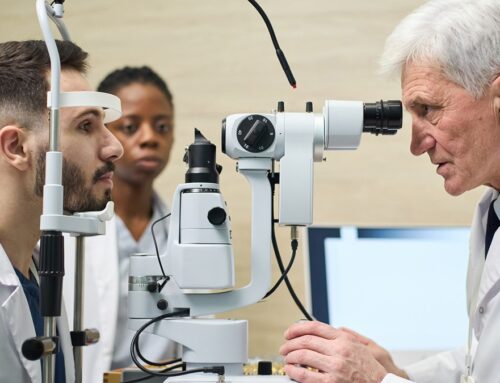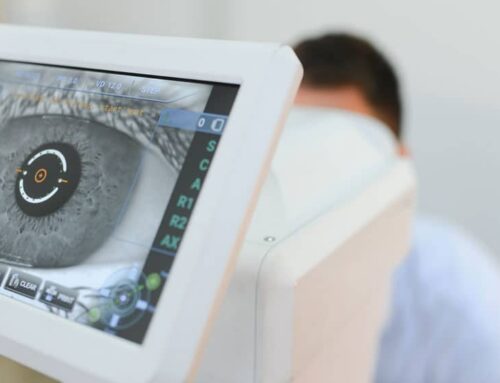If you’ve been noticing your vision slowly declining, or have been looking for a way to free yourself from glasses and contacts, you’ve likely come across PRK eye surgery already. While there are several kinds of refractive surgery available, choosing between them can prove difficult without proper knowledge. To help make this easier, we’ll be covering everything you need to know about PRK, including what to expect from PRK eye surgery, cost, and how this laser eye surgery could could benefit you and your vision.
What is PRK Eye Surgery?
Photorefractive Keratectomy (PRK) is a type of laser eye surgery designed to correct vision problems by reshaping the cornea. It works by first removing the outer layer of the cornea (epithelium removal), allowing your LASIK surgeon to then alter the underlying corneal tissue using an excimer laser. This surgical technique is highly effective for vision correction and improving visual acuity.
What Does PRK Treat?
PRK eye surgery is an effective treatment for those seeking freedom from glasses or contact lenses such as:
- Nearsightedness (Myopia)
- Farsightedness (Hyperopia)
- Astigmatism
It’s important to note that difficulty focusing on small text up close is a natural part of aging, so you may still need reading glasses from time to time.
What Makes PRK Different From LASIK?
Unlike LASIK, which involves creating a cornealflap, PRK eye surgery directly accesses the corneal surface, making it a preferable option for patients who may not be suitable candidates for LASIK in cases of:
- Thin corneas
- Active lifestyles, such as engagement in contact sports
Despite their differences, both options offer permanent vision improvement, with 97% of patients reporting 20/20 vision after the first year.
What Does PRK’s Procedure Look Like?
Before undergoing PRK, you’ll be required to go through a pre-operative evaluation to determine candidacy. If you’re a good fit, then you expect the entire PRK process to take no more than 15 minutes as an outpatient procedure. You’ll be awake the entire time, and you’ll be able to go home shortly thereafter.
- Numbing drops are applied to your eye to help ensure that you’re comfortable throughout the procedure.
- Your surgeon then gently removes the outer layer of the cornea.
- Finally, an excimer laser is used to precisely reshape the cornea, allowing light entering the eye to be focused correctly onto the retina, resulting in clearer vision.
After your PRK eye surgery, the surface of your cornea will regenerate naturally.
What is PRK Eye Surgery’s Recovery Time Like?
PRK typically requires a longer recovery period, with full visual clarity taking about 5-days to 3-weeks to achieve. As you heal, you’ll see a gradual improvement in your vision, but may experience some discomfort and blurred vision. This can be managed easily with pain medication and the prescription eye drops. You’ll also be asked to wear bandage lense for at least 3-days while your eye heals.
It’s not uncommon to experience some visual disturbances, such as glare or halos, though these should go away naturally on their own. In very rare cases, some patients experience corneal haze, which can be addressed during follow-up exams.
How Much Does PRK Eye Surgery Cost?
The PRK surgery cost varies based on geographic location and surgeon experience. The average PRK price, ranges from $2,000 to $3,000 per eye. Now, you may be wondering, “How much is PRK with insurance?” Unfortunately, because it’s an elective procedure, it’s not covered. But, more often than not, there are financing options available through your choice of surgical center.
Key Takeaways
PRK offers an effective, long-term solution for patients with specific needs or conditions, such as active lifestyles or thin corneas. If you’re considering PRK eye surgery, consulting with an experienced PRK surgeon near you can give you all the information you need about the surgical technique, candidacy requirements, and expected results. For more information on finding a qualified surgeon or exploring additional resources about eye care procedures, visit our Patient Resources Education Center.







